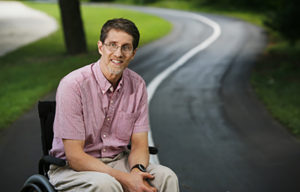This article originally appeared on The Source and it is reproduced here with permission.
Ross Brownson, the Bernard Becker Professor and director of the Prevent Research Center at the Brown School, has been awarded a $2.9 million grant from National Institutes of Health/National Cancer Institute for a five-year project aimed at promoting physical activity in rural communities.[/side_car]

“There are notable disparities in rates of physical activity in rural communities, with rural residents at higher risk for cancer and other chronic diseases,” Brownson said. “Given that rural residents make up 15 percent of the population, there is an imperative to develop and implement interventions to promote physical activity.”
The project’s primary goal will be to identify novel approaches for stimulating adults in rural environments to engage in recreation or physical activity to improve health. A combination of approaches will be used across six rural communities, including text messaging, walking groups and community events at walking trails.
The project is the first of its kind in rural settings to test a multi-pronged intervention. It will address life priorities that complement health outcomes, such as family and recreation, and examine how behavioral interventions and natural environments may work together to enhance physical activity.